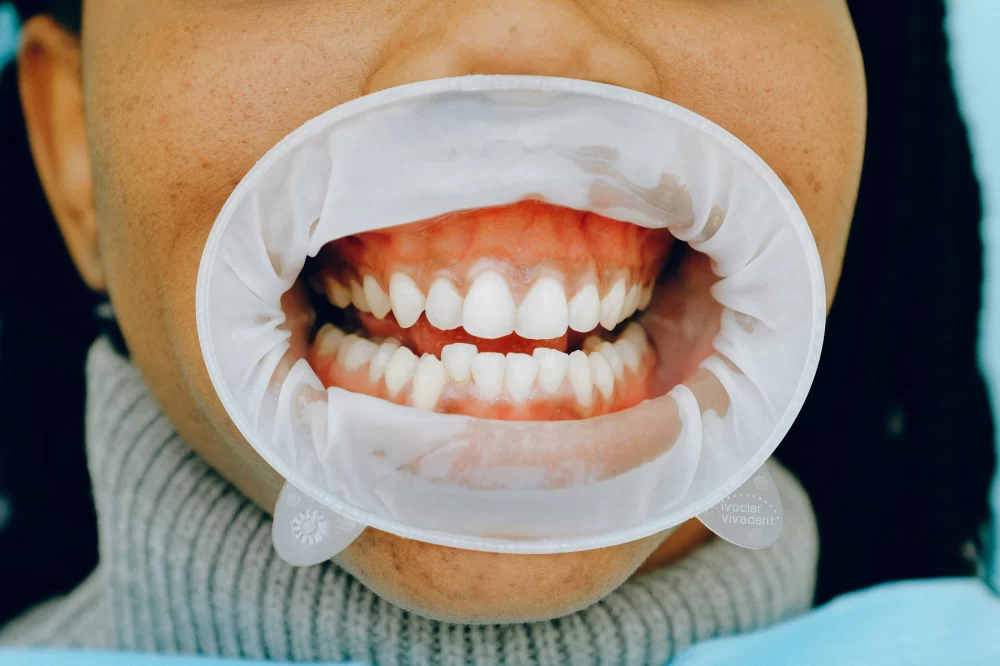
Effective Treatments for Receding Gums: Tips for Healthy Gums
- Understanding Receding Gums
- What Causes Gum Recession?
- Effective Treatments for Receding Gums
- Natural Remedies for Gum Recession
- Case Study: How One Patient Reversed Gum Recession
- Next Steps for Managing Gum Health
Understanding Receding Gums
Receding gums occur when the tissue that surrounds the teeth wears away, exposing more of the tooth or even the tooth’s root. This condition can lead to tooth sensitivity, discomfort, and a higher risk of cavities. If left untreated, gum recession can also result in tooth loss. Early treatment is essential to prevent further damage and improve gum health.
In this article, we will discuss the best treatments for receding gums, how to prevent them from worsening, and some natural remedies that can support gum health.
What Causes Gum Recession?
Gum recession can happen due to several factors, including poor oral hygiene, gum disease (periodontitis), brushing too aggressively, and even genetic predisposition. It's also common in individuals who smoke or use tobacco products.
Understanding the underlying causes of gum recession is crucial for selecting the right treatment. For example, if gum recession is caused by poor brushing technique, changing your brushing habits could prevent further damage.
Effective Treatments for Receding Gums
1. Deep Cleaning (Scaling and Root Planing)
One of the most effective treatments for receding gums is deep cleaning, also known as scaling and root planing. This non-surgical procedure is performed by a dentist or hygienist and involves removing plaque and tartar from below the gumline. Root planing helps smooth the root surfaces, allowing the gums to reattach to the teeth.
2. Gum Grafting
In more severe cases, a gum graft may be necessary. During this procedure, a dentist takes tissue from another part of your mouth (such as the roof of your mouth) and grafts it onto the affected areas to cover the exposed tooth roots. This not only helps restore the appearance of your gums but also reduces the risk of further recession.
3. Pinhole Surgical Technique
The Pinhole Surgical Technique is a minimally invasive procedure that involves making small holes in the gum tissue to reposition it over the exposed tooth roots. This technique requires no stitches and offers a faster recovery time compared to traditional gum grafting.
4. Antibiotics for Gum Infection
If gum recession is caused by gum disease, antibiotics may be prescribed to control infection. This helps reduce inflammation and allows the gums to heal more effectively. Antibiotic treatments are usually combined with professional cleaning to manage periodontal disease.
Natural Remedies for Gum Recession
1. Aloe Vera Gel
Aloe vera has natural anti-inflammatory properties that can help reduce gum inflammation and promote healing. Applying fresh aloe vera gel to the affected areas can soothe irritated gums and may support the regeneration of healthy gum tissue.
2. Salt Water Rinse
A salt water rinse is a simple and effective way to reduce gum swelling and prevent infection. Mix a teaspoon of salt in a glass of warm water and rinse your mouth for 30 seconds to promote gum health.
3. Coconut Oil Pulling
Coconut oil pulling is an ancient Ayurvedic practice that involves swishing a tablespoon of coconut oil around in your mouth for 10–15 minutes. This practice helps reduce plaque buildup and can promote healthier gums over time.
Case Study: How One Patient Reversed Gum Recession
Let’s look at Sarah’s case. Sarah, a 42-year-old woman, came to her dentist with concerns about her receding gums. After a thorough examination, her dentist recommended a combination of deep cleaning and the use of an antimicrobial mouthwash to treat her gum disease. Sarah was also advised to switch to a soft-bristled toothbrush and avoid aggressive brushing.
Six months later, Sarah saw a significant improvement in her gum health. Her gum recession had slowed, and the inflammation had decreased. With continued care, Sarah was able to prevent further gum recession and improve her overall oral health.
Next Steps for Managing Gum Health
If you are dealing with receding gums, it’s important to seek professional treatment and adopt a proper oral hygiene routine. Regular visits to your dentist are essential to monitor your gum health and prevent the condition from worsening.
For long-term gum care, consider using dental products designed to support gum health, such as a fluoride toothpaste, antimicrobial mouthwash, and a soft-bristled toothbrush.
Click here to explore our range of oral care products and start protecting your gums today!







 American Unity Dental4.0 (177 review)
American Unity Dental4.0 (177 review) Dr. Jack B. Share, DDS5.0 (3 review)
Dr. Jack B. Share, DDS5.0 (3 review) Floral Vale Periodontics and Implants, P.C.5.0 (180 review)
Floral Vale Periodontics and Implants, P.C.5.0 (180 review) Fircrest Children's Dentistry4.0 (28 review)
Fircrest Children's Dentistry4.0 (28 review) Juan Carrillo, DMD4.0 (334 review)
Juan Carrillo, DMD4.0 (334 review) Caring Smile Dentistry5.0 (215 review)
Caring Smile Dentistry5.0 (215 review) The Importance of Oral Health Education During Pregnancy for a Healthy Pregnancy
The Importance of Oral Health Education During Pregnancy for a Healthy Pregnancy Best Tips for Brushing Your Teeth Properly for Healthy Gums: Essential Techniques for Oral Health
Best Tips for Brushing Your Teeth Properly for Healthy Gums: Essential Techniques for Oral Health Why Skipping Dental Checkups Can Lead to Bigger Oral Health Problems
Why Skipping Dental Checkups Can Lead to Bigger Oral Health Problems Advantages of Porcelain Dental Restorations
Advantages of Porcelain Dental Restorations How Can Diabetes Cause Tooth and Gum Problems? Preventing and Managing Oral Health Issues
How Can Diabetes Cause Tooth and Gum Problems? Preventing and Managing Oral Health Issues Healthy Habits for Promoting Good Oral Health and Hygiene: Tips for a Healthy Smile
Healthy Habits for Promoting Good Oral Health and Hygiene: Tips for a Healthy Smile